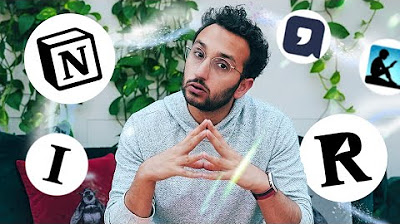How to Gut a Book or Article
Summary
TLDRJeff Debelko from Ohio University's Voynich School of Leadership discusses 'gutting' a book or article as an effective strategy to quickly extract key insights without reading every word. Positioned between skimming and thorough reading, gutting focuses on identifying the central arguments, evidence, and conclusions. This method helps tackle large volumes of material, especially in academic settings. Practical tips include reading key sections like introductions and conclusions, highlighting, and taking notes. While gutting sacrifices some details, it empowers students, particularly graduate students, to engage with more content efficiently and return to deeper readings as needed.
Takeaways
- 📚 Gutting a book or article is a strategy between skimming and reading every word, offering a balanced approach to understanding material without going too deep or too shallow.
- ⏳ It's helpful when you don't have time to read every word but still need to grasp the key arguments, criticisms, and case studies.
- 📝 The process involves reading selectively, focusing on parts like the introduction, first and last chapters, and identifying the main arguments and conclusions.
- 🔖 Highlighting, making margin notes, and summarizing key points are effective techniques to enhance understanding.
- 🔍 Reading the first and last sentences of paragraphs can provide a quick grasp of the content without reading everything in detail.
- 📊 The goal is to capture the essential arguments and evidence, helping you connect it to other readings or projects.
- 💡 Gutting a book allows you to absorb material faster, and you can always return to read in full if necessary.
- 🎓 Graduate students, in particular, should use this method as a survival strategy to manage heavy reading loads.
- 🛠 It's important to customize the strategy based on the type of book or article and your familiarity with the subject matter.
- 🤔 While gutting helps cover more ground, it may lead to missing some details, but it can be adjusted depending on how in-depth you want to go.
Q & A
What is the main topic Jeff Debelco discusses in the transcript?
-Jeff Debelco discusses the concept of 'gutting' a book or article, a reading strategy that is more thorough than skimming but less time-consuming than reading every word. It helps readers focus on key arguments, evidence, and takeaways.
How does gutting differ from skimming and reading every word?
-Gutting is more in-depth than skimming, which is superficial, but it’s faster than reading every word. The goal is to extract essential information without fully immersing in the entire text.
Why does Jeff recommend the gutting strategy?
-He recommends the gutting strategy because it allows readers to process a large amount of material efficiently while still capturing the main arguments and evidence, which is particularly useful for students and researchers.
What are some practical strategies for gutting a book?
-Some strategies include reading the introduction, first chapter, and last chapter, as these often contain the core arguments and conclusions. Additionally, readers should focus on the beginning and end of paragraphs and look for key case studies or examples.
What tools does Jeff suggest using while gutting a book?
-Jeff suggests making margin notes, using a highlighter, and writing down key points either on the computer or by hand. This helps in retaining and later referencing the essential information.
What is one example of a book that Jeff mentions in the transcript?
-He mentions *Heatwave: A Social Autopsy of Disaster in Chicago*, a sociological study that examines the impact of a heatwave on social networks, especially focusing on older adults who were affected by the disaster.
What are the key takeaways when gutting a book or article?
-The key takeaways include understanding the main argument, identifying criticisms, reviewing case studies or evidence, and synthesizing the essential points in relation to other readings or research.
How does gutting a book help in academic or research settings?
-Gutting helps students and researchers manage large volumes of material efficiently, allowing them to engage with multiple arguments and perspectives without getting overwhelmed by detail, and making it easier to connect ideas across texts.
What are some potential downsides of the gutting strategy?
-One downside is that by not reading every word, readers may miss out on some details or nuances. However, Jeff notes that this can be addressed by revisiting the book later if needed.
Why is gutting especially recommended for graduate students?
-It’s recommended for graduate students because they are often required to read and synthesize large amounts of material in a short time. Gutting provides a survival strategy for keeping up with the workload while still engaging critically with the material.
Outlines

هذا القسم متوفر فقط للمشتركين. يرجى الترقية للوصول إلى هذه الميزة.
قم بالترقية الآنMindmap

هذا القسم متوفر فقط للمشتركين. يرجى الترقية للوصول إلى هذه الميزة.
قم بالترقية الآنKeywords

هذا القسم متوفر فقط للمشتركين. يرجى الترقية للوصول إلى هذه الميزة.
قم بالترقية الآنHighlights

هذا القسم متوفر فقط للمشتركين. يرجى الترقية للوصول إلى هذه الميزة.
قم بالترقية الآنTranscripts

هذا القسم متوفر فقط للمشتركين. يرجى الترقية للوصول إلى هذه الميزة.
قم بالترقية الآن5.0 / 5 (0 votes)






